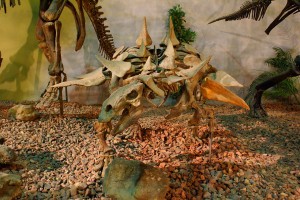WEDNESDAY, 6 JUNE 2012
In a new study published last week in the Journal of Systematic Palaeontology, Cambridge University palaeontologist Rick Thompson with colleagues from The Natural History Museum, London, revealed the most detailed reconstruction of the ankylosaur family tree. Their study however, was confounded due to the unique arrangement of the dinosaurs' defences: "We knew that there were two distinct groups, with the possibility of a third. How this third group fits into the tree is really hard to judge because the armour on ankylosaur skulls fuses all the bones together, destroying valuable information", Thompson explains. After describing how this anatomy differed between species, Thompson and his colleagues then decided to include an unprecedented number of species in their analysis.Although over 50 species have been described, many are represented by small fragmentary remains. However, it was the inclusion of these small fossils that enabled the team to generate results altering the structure of the ankylosaur family tree, whilst retaining certainty about their results. "Our work highlights you can get crucial information out of these tiny remains. Many scientists would exclude these fossils, losing taxa that could be evolutionarily crucial".
DOI:10.1080/14772019.2011.569091
Written by Nick Crumpton

